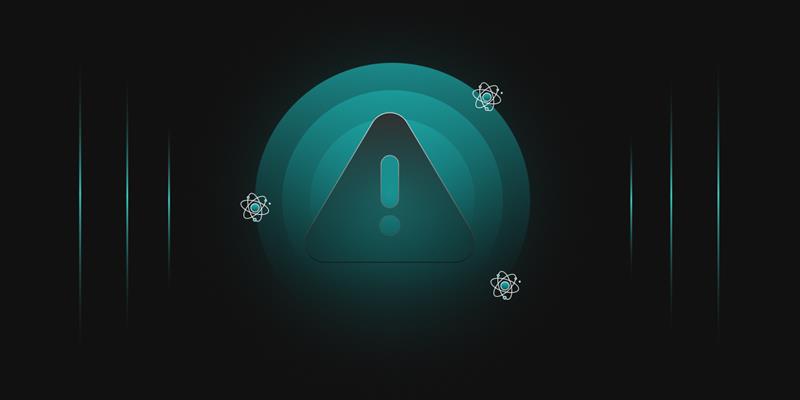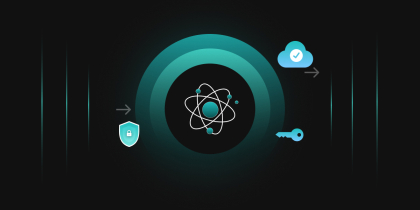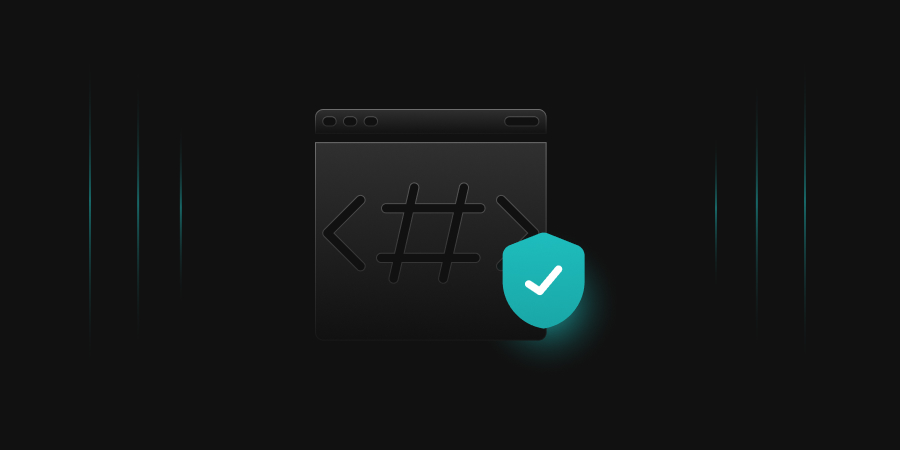Digital signatures are at the core of online security. They make sure that the data you receive is genuine and has not been tampered with. For decades, RSA and ECC (Elliptic Curve Cryptography) have been the leading digital signature algorithms. But the rise of quantum computing threatens to break both of them. To prepare for this, the National Institute of Standards and Technology (NIST) has selected new algorithms under its Post-Quantum Cryptography (PQC) standardization process. Among them, ML-DSA has been chosen as the future standard for digital signatures.
Why RSA and ECC Need Replacing?
RSA’s security relies on the difficulty of factoring large integers. The fastest known general-purpose classical algorithm for factoring large integers is the General Number Field Sieve (GNFS), which runs in sub-exponential time. In contrast, Shor’s algorithm factors integers in polynomial time on a quantum computer, meaning that RSA would be completely broken if scalable, fault-tolerant quantum computers are ever built.
ECC is based on the hardness of the elliptic curve discrete logarithm problem. Pollard’s rho is the fastest known general-purpose classical attack on ECDLP, and it runs in exponential time relative to the key size. Shor’s algorithm, however, can solve discrete logarithms in polynomial time on a quantum computer, leaving ECC just as vulnerable as RSA in the quantum era.
Larger key sizes do not solve the problem, since the quantum algorithms remain efficient regardless of key length. This means RSA and ECC could be broken, leaving digital signatures vulnerable.
What is ML-DSA?
ML-DSA (Module Lattice–based Digital Signature Algorithm) is a post-quantum digital signature scheme derived from the CRYSTALS-Dilithium project. It relies on the hardness of lattice-based problems, specifically Module-LWE (Learning With Errors) and Module-SIS (Short Integer Solution). According to NIST, ML-DSA is believed to be secure even in the presence of large-scale quantum computers, based on current cryptanalysis.
These mathematical problems are considered resistant to attacks from both classical and quantum computers, making ML-DSA a strong candidate to secure digital signatures in the coming decades. Here are some reasons for this consideration:
-
Quantum-Safe Security
Lattice problems (like LWE, Ring-LWE, SVP) are believed to be resistant to quantum algorithms such as Shor’s and Grover’s, making them strong candidates for PQC. These problems involve finding hidden structures within high-dimensional lattices (grids of points).
While the best-known algorithms for solving them run in exponential or sub-exponential time and as the lattice parameters increase, solving them becomes practically impossible at cryptographic sizes. Lattice-based schemes (e.g., ML-KEM for encryption and ML-DSA for signatures) were finalized by NIST as PQC standards, giving them credibility and industry adoption momentum.
-
Simplicity over Complexity
Some post-quantum schemes rely on advanced algebraic structures like multivariate polynomials or massive hash-based constructions. These can be difficult to implement and optimize securely. ML-DSA, in contrast, uses hash functions, modular arithmetic, and structured randomness, well-understood tools that make the scheme easier to implement, audit, and maintain across platforms.
-
Cross-Platform Usability
It is optimized to run efficiently on a wide range of devices, from servers and laptops to constrained environments like embedded systems and IoT hardware. Unlike other PQC alternatives, ML-DSA does not require specialized accelerators or custom hardware, making adoption simpler and more practical across diverse platforms.
-
Side-channel awareness
ML-DSA takes side-channel security seriously. To limit the chances of leaking sensitive information, it avoids common pitfalls such as:
- Floating-point arithmetic, which can introduce timing variations exploitable by attackers.
- Secret-dependent branching, where execution timing could reveal private key bits.
- Irregular memory access, which attackers can monitor through cache behavior.
Instead, ML-DSA sticks to constant-time, integer-based operations, keeping its execution predictable and reducing the kinds of subtle leaks that often trip up more complex cryptographic designs.
-
Implementation Practicality & Performance
Despite larger key sizes than RSA/ECC, lattice-based schemes remain computationally efficient and practical for deployment. Their balance of performance, security, and flexibility makes them strong candidates for real-world applications like secure messaging, IoT, and digital infrastructure. One of ML-DSA’s biggest strengths is performance, it is much faster at signing and verification than hash-based options like SPHINCS+. This speed makes it a practical choice for real-world use cases such as high-volume authentication and secure communications.
ML-DSA (Crystals Dilithium) Parameter Sets
| Parameter set | Public key (bytes) | Private key (bytes) | Signature (bytes) |
|---|---|---|---|
| ML-DSA-44 | 1,312 | 2,560 | 2,420 |
| ML-DSA-65 | 1,952 | 4,032 | 3,309 |
| ML-DSA-87 | 2,592 | 4,896 | 4,627 |
Key Features of ML-DSA
-
Post-Quantum Security
ML-DSA is built on lattice-based cryptography, a branch of cryptography that leverages the mathematical structure of lattices and is believed to be secure against both classical and quantum attacks. It is specifically designed to withstand attacks from large-scale quantum computers.
-
Standardized by NIST
In 2024, NIST standardized ML-DSA as the primary digital signature algorithm for PQC in their FIPS 204 document. This makes it the official replacement for RSA and ECC in most applications.
-
Practical Efficiency
ML-DSA delivers fast signing and verification, outperforming several other post-quantum alternatives that trade speed for security. Its key and signature sizes, while larger than ECC, remain far more manageable than bulkier schemes like SPHINCS+. Built on a straightforward integer-based design, ML-DSA is easier to implement securely, reducing risks of bugs and side-channel leaks, making it a highly practical choice for real-world deployment.
Comparing RSA, ECC, and ML-DSA
| Feature | RSA | ECC | ML-DSA |
|---|---|---|---|
| Security Basis | Integer factorization | Elliptic curve discrete log | Lattice problems (Module-LWE, Module-SIS) |
| Quantum Resistance | Not secure | Not secure | Secure |
| Key Size | ~2048–3072 bits | ~256 bits (equivalent) | ~1–1.5 KB |
| Signature Size | ~256 bytes | ~64–72 bytes | ~2–3 KB |
| Performance | Slow sign, fast verify | Fast sign, moderate verify | Fast sign, slower verify |
Why ML-DSA is the Future?
The U.S. federal government estimates that $7.1 billion will be spent between 2025 and 2035 to update systems currently using RSA and ECC signatures. A significant portion of this investment will be directed toward deploying ML-DSA for digital signatures. NIST has also announced that by 2030, classical digital signature algorithms like RSA, ECDSA, and EdDSA will be deprecated. By 2035, they will be completely disallowed in federal systems.
ML-DSA, derived from CRYSTALS-Dilithium, has been standardized as the primary replacement for these signatures. Some key reasons why ML-DSA is the future are:
- It prepares our digital security for the future as it protects against both classical and quantum attacks.
- ML-DSA is backed by NIST, ensuring global adoption.
- ML-DSA has a wide applicability. It can be integrated into software, firmware, and hardware systems to secure communications, code signing, and sensitive data.
How can Encryption Consulting Help?
Getting started with post-quantum signatures can feel overwhelming with new algorithms, larger key sizes, complex integrations, and compliance requirements all at once. That’s where we step in.
At EC, we’ve built solutions that make adopting ML-DSA simple. Our CodeSign Secure platform supports ML-DSA natively, along with other NIST-approved algorithms. Whether you’re signing software, firmware, documents, or certificates, we handle the technical heavy lifting so your team can focus on delivery.
Here’s what you get with our CodeSign Secure:
- Seamless ML-DSA support in signing workflows
- Easy integration with existing PKI and HSM setups
- Automation hooks for CI/CD pipelines
- Secure key storage options
- Audit-ready compliance trails
If your team wants to test or deploy post-quantum signatures without reinventing the wheel, we can help. Start small, experiment, and scale at your own pace. And if you’re still unsure where to begin, our PQC Advisory Services can help. From discovery to deployment, we guide you through every stage of post-quantum migration, mapping your cryptographic assets, designing tailored strategies, evaluating vendors, and supporting smooth implementation with ML-DSA and other NIST-approved algorithms.
Reach out to us at info@encryptionconsulting.com and let us build a customized roadmap that aligns with your organization’s specific needs.
Conclusion
RSA and ECC have served as the foundation of digital signatures for decades, but the quantum era demands stronger protection. ML-DSA provides that protection, offering a secure and standardized solution for the future. By adopting ML-DSA, organizations can ensure their digital signatures remain trustworthy in the post-quantum world.
To make sure that this transition to post-quantum algorithms goes smoothly, expert and experienced guidance is key. At Encryption Consulting, we’re committed to helping you move forward with clarity, confidence, and a strategy tailored to your goals. Let’s get started and ensure your organization is protected, not only today, but well into the future.




